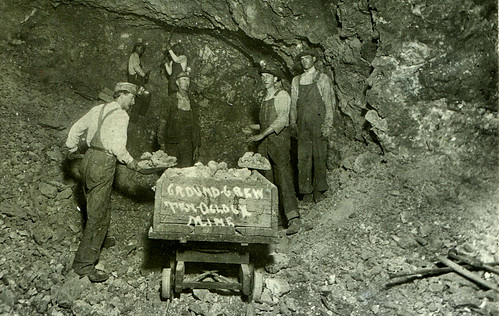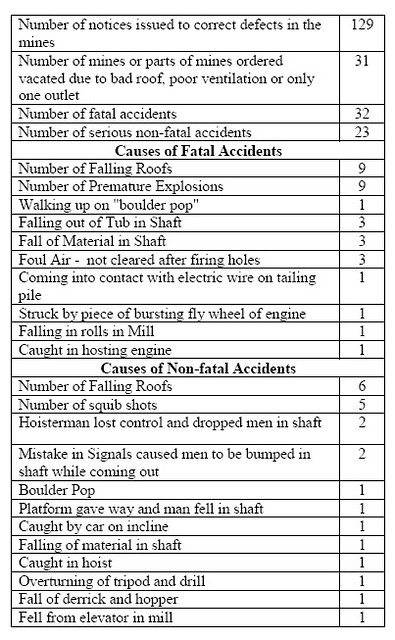From the beginning, lead and zinc mining in the Joplin district was a dangerous means to make a living, and if lucky, a fortune, too. The year 1910 was considered a good one, respectively, when compared to 1909 when 51 miners lost their lives. In 1910, in contrast, only 32 miners were killed in the pursuit of the valuable ore. Every year, mine inspectors from the state toured the mines which surrounded Joplin to ensure compliance with mining laws and to note deaths and the causes behind them. In 1910, two inspectors toured 551 mines and 65 accidents. Here are the results and a snapshot of mining in Joplin in 1910.
In summary, the most dangerous element in a mine came from above. Of the combined deaths and serious injuries, falling mine roofs accounted for 27% of the victims. The next deadliest was the more obvious danger of explosives in the form of premature explosions, squib shot (involved in the dynamiting process), and to a degree, the foul air which was caused by failing to blow out the air in a mine following an explosion. Sadly, even entering and exiting a mine bore a certain amount of lethal danger, as our previous post on the unfortunate Number 52 noted.
Source: Joplin News Herald





Having had numerous ancestors who mined the areas of southwest MO and southeast KS, I am aware that several of those lost their life due to falling rocks or equipment failures (such as when the “bucket” would drop inappropriately). I am also aware of those who were maimed due to dynamite accidents followed by not necessarily the greatest medical attention. However, after researching the lives of various ancestors,foremost in my mind is the fact that even if they survived accidents at the mine, there was an extremely increased likelihood that they would die of some form of lung disease. Many death certificates of my ancestors denote “miner’s consumption” and/or tuberculosis as the cause of death.
Pulmonary disease was indeed one of the killers of Joplin miners (and miners elsewhere). A groundbreaking study was actually performed in Joplin on the matter of pulmonary disease around 1915 and was the first to raise the alarm of the dangers of working in the mine for the lungs.